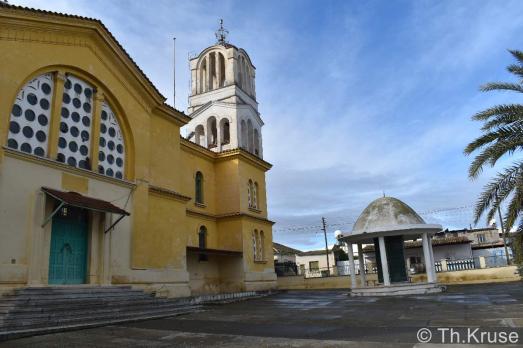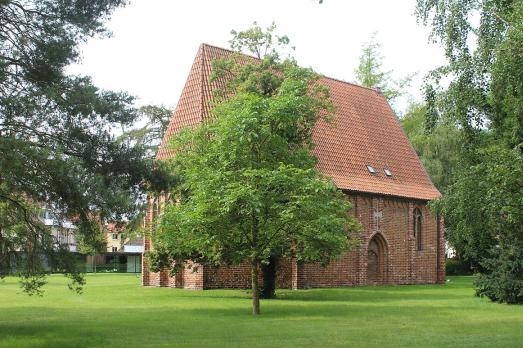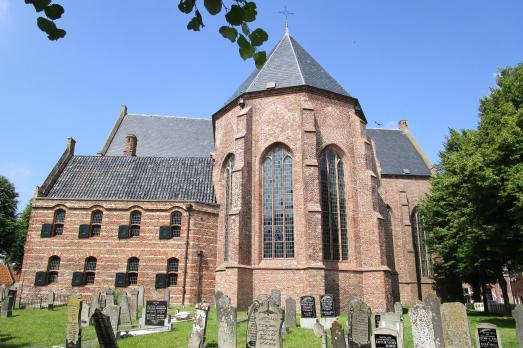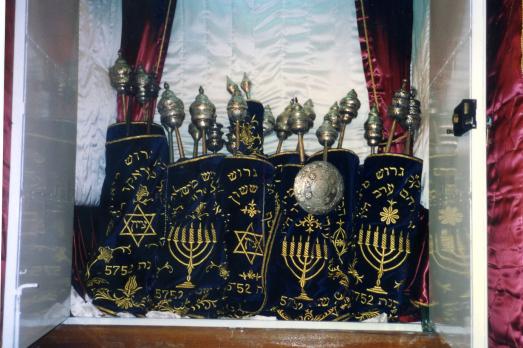
Gerolakkos Agios Mamas Church
Gerolakkos, CY
The church of Agios Mamas was built around 1800 and is situated on the northern edge of the old village centre. On the day of the survey, the church was closed.
Here you can search for a building to visit. You can use the map find destinations, or you can use the filters to search for a building based upon what different criteria.

Gerolakkos, CY
The church of Agios Mamas was built around 1800 and is situated on the northern edge of the old village centre. On the day of the survey, the church was closed.

Gerolakkos, CY
The second parish church with the ecclesionym Panagia Evangelistria, which was built on the southern edge of the original village centre, has a longer construction history. According to Kassinis, the construction of the church was started as early as 1918, but then stopped two years later. It was not until 1954 that construction resumed and was completed five years later. After 1974, the church was converted into a mosque. This conversion continued until a new mosque was built in the early 2010s.

Güstrow, DE
The construction of the Gertrude chapel dates back to the turn between the 14th and the 15th century. Originally, it was a half-timbered structure with brick masonry. The Gothic chapel was rebuilt in the 1930s.

Workum, NL
The Gertrudis church in the Frisian town of Workum is a late Gothic brick church, founded in 1480 and resumed in 1523. The free-standing church tower was built after 1523 but remained unfinished. However, in 1613, an onion dome was applied to the second section of the tower.

Abbega, NL
The Gertrudiskerk (Church of St. Gertrudis) in Abbega is a Dutch Reformed Church built in 1809 over an earlier medieval church building.

Achlum, NL
The Gertrudiskerk (Church of St. Gertrudis) in Achlum is a historic temple built in the 12th century and listed as a National Monument of the Netherlands. The interior of the church dates from around 1650 and is largely still in its original state.
Lytsewierrum, NL
Replaced older church, 1772 tower renewed. On January 1, 2002, the Protestant churches in our region joined forces and the Samen-Op-Weg community De Slachsang was formed (now Protestant Regional Community De Slachsang). The regional community is a merger of the Protestant community De Slachsang in Lytsewierrum, which also includes Rien and part of Reahûs, the Protestant community De Slachsang in Britswert-Wiuwert-Easterwierrum and the Protestant community De Slachsang in Boazum.
Idaerd, NL
Simple church building from 1774 at saddle roof tower, rebuilt in 1541. On the north side of the nave entrance with coat of arms stone and 1774. Against the north side of the tower building fragments including 1652 of Friesma-State. In the church 17th century pulpit tub and sounding board. Carved 18th century tombstones serve as a back wall, crowned by a carved attachment of a family pew. Twelve pews with knobs above the cheeks; under the organ gallery an 18th century family pew; two painted 17th century mourning boards and two carved 18th century. In the six windows stained glass by Ype Staak. In the front church a tombstone with coats of arms.

Gerum, SE
Gerum Church is one of the 92 medieval churches on the island of Gotland.

Osmangazi/Bursa, TR
The Gerush Synagogue in Bursa is a Sephardi synagogue from the 16th century, rebuilt in 1872. The synagogue is built of stone.

new
The Chassidic Route is a cultural and historical trail tracing the rich legacy of Jewish communities in southeastern Poland and western Ukraine. This region was central to the rise of Chassidism in the 18th century. Here, we highlight 10 remarkable synagogues you’ll discover along this route.

he cradle of the Industrial Revolution in Germany, Chemnitz, is well-known for its industrial heritage landscape, but the city is also home to remarkable examples of religious architecture from different historical periods. Join us as we explore the key landmarks of this European Capital of Culture 2025.

The twin towns of Nova Gorica (Slovenia) and Gorizia (Italy), lying on the border between the two countries, have a rich religious heritage, steeped in centuries of tradition. If you are looking for ideas for your visit, take note of these 10 religious sites that you should not miss.